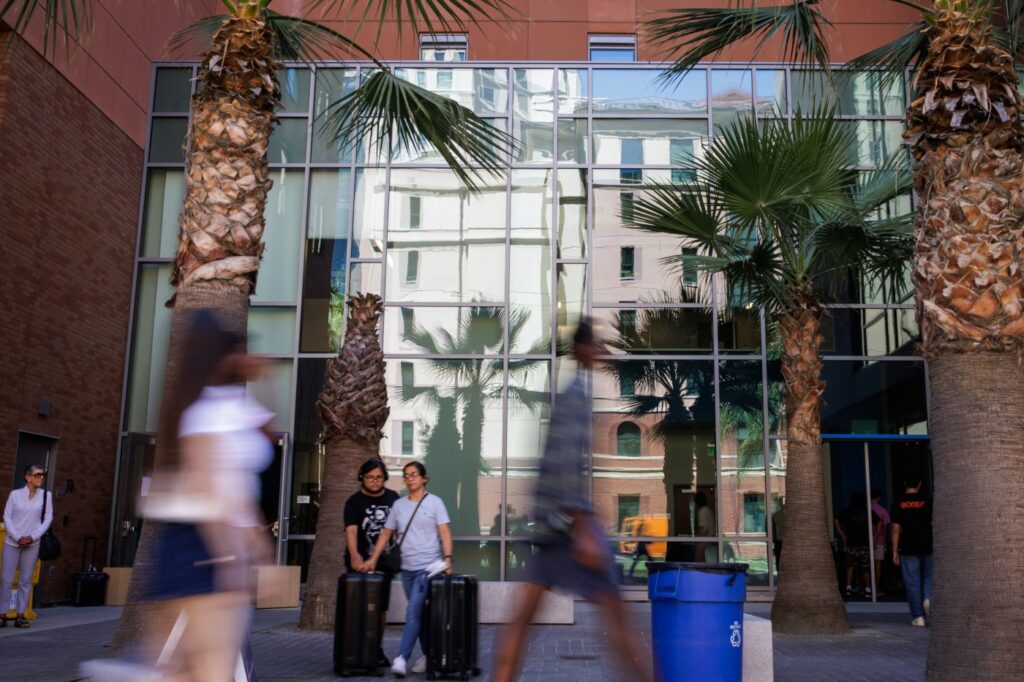Students enrolled at California State University next fall will see their tuition spike 6% annually for the next five years — an increase that will affect 460,000 students across the Golden State. After hours of emotional testimony, the CSU trustees voted 9-0 for the increase — the first since the 2011-12 academic year — to help narrow a $1. 5 billion funding gap facing the 23-campus system.
“CSU’s struggle with financial sustainability and predictability under a state-funding-only model just doesn’t work,” said Steve Relyea, the executive vice chancellor and chief financial officer of the CSU, at a board of trustees meeting on Wednesday. “The revenue from the tuition proposal is essential for the CSU to serve its students in the future. ” The new tuition increase, scheduled through the 2028-29 academic year, brings the bill for the fall 2024 semester to $6,084, a bump of $342.
By the spring 2029 semester, full-time undergraduates would be required to pay $7,682 for the academic year, while higher-level programs, such as a doctorate in public health, would total about $25,000 per year. Around 20% of students pay full tuition, while around 80% — more than 380,000 students received some financial aid in the 2021-22 school year. Those increases are expected to generate $840 million over the next five years, including an increase of student financial aid by $280 million.
The remaining money would go toward a number of other initiatives, CSU Assistant Vice Chancellor Ryan Storm explained, including academic and student services support; basic needs and mental health services; Title IX implementation and ongoing costs; infrastructure, including new facilities and ongoing maintenance; and compensation to attract and retain outstanding faculty and staff. The university’s massive funding gap was first identified by a CSU working group report released in May, which found that the system only has enough money to pay for about 85% of the actual costs of education, institutional and academic support, and student services. CSU’s budget is primarily funded from California state budget subsidies and tuition revenues.
Neither of those, though, have kept up with the ever-increasing costs of operating the nation’s largest state university system, according to the May report. About 60% of the CSU’s operating budget is funded by the state, down from about 90% in the 1980s, while the remaining 40% comes from tuition revenue. Though Gov.
Gavin Newsom has agreed to a funding compact with the CSU that will provide a 5% annual boost to its annual budget — amounting to a $227. 3 million increase for this fiscal year — officials say it isn’t nearly enough. “I know it’s tough to do this.
We don’t like it, and it’s difficult,” said Jack McGrory, a member of the CSU board of trustees. “But we’ve got to make the numbers work, and we’ve got to do something long-term that makes sense, and continues the quality of education that we have on these 23 campuses. ” Crowds rallied outside the meeting in Long Beach, with students and professors speaking against the tuition spikes.
Lt. Gov. Eleni Kounalakis, who sits on the CSU’s board of trustees, spoke about the “unintended consequences” of the tuition hike, and recommended delaying the vote until those consequences are fully understood.
“I don’t see how we can do this without knowing what a $2,000 increase is going to mean for our students. We know anecdotally that a lot of students are going to drop out. We know anecdotally that a lot of students are going to have many more years added onto their timeline to be able to graduate,” Kounalakis said at the meeting.
“The students we serve are students that come from families that cannot afford traditional private universities or other states’ public university systems. ” State Superintendent of Public Instruction Tony Thurmond also voiced opposition of the tuition hike earlier that day, with his office stating it “would be a huge setback for California students and families. ” In the past, the superintendent had convened a working group to explore a tax on billionaires that could generate up to $22 billion for California’s public universities, his office said, among other efforts to secure long term funding for such institutions.
“As a state, we should be investing in our students, not placing financial roadblocks in the way of aspiring teachers, school counselors, and the next generation of workers and leaders,” Thurmond said. Still, many others spoke about what would happen if tuition continued to stagnate — and how the university would keep up with costs amidst the massive funding gap. “We know that our system, which is a gem in this state, is going to deteriorate unless we can pay for it,” said Leslie Gilbert- Lurie, another member of the board of trustees.
“Of all of the people that have spoken with us and said find another way, I have not heard a suggestion of another way. ” CSU’s incoming chancellor Mildred García, who will begin in October, will receive a base salary of $795,000, with annual deferred compensation of $80,000, a monthly auto allowance of $1,000 and a monthly housing stipend of $8,000. The former chancellor received a salary of $625,000, with $7,917 monthly housing and $1,000 monthly auto allowances.
Officials have said that the chancellor’s salary will not impact the $1. 5 billion budget gap, noting that executive salaries make up less than one percent of CSU’s total salaries and wage expenses. “I understand it is going to be hurting a substantial amount of students; they will feel financial pain,” said Lillian Kimbell, another member of CSU’s board of trustees.
“But I just don’t think there is any other option. ”.
From: mercurynews
URL: https://www.mercurynews.com/2023/09/13/california-state-university-tuition-to-rise-33-over-the-next-six-years/
